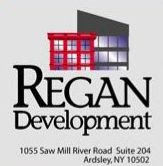The Coconut Building in Hoboken, NJ, once served as a coconut storage facility for theproduction of Hostess snack cakes. Today, half of the original building has been demolished and the other halfhas been renovated to make way for the recently completed Garden Lofts, a 30-unit luxury
condominium building with 7,500 square feet of retail space on the ground level. The entire projectis Silver LEED certified. The $16,800,000 project was managed by Union, NJ-based Del-Sano Contracting Corporation for Bijou Properties, LLC. It began in November 2006 and incorporated cost-saving measures to keep the project on schedule and on budget. Despite the many challenges of the project, it was completed in December 2008. "The project developer envisioned and desired a LEED-certified Silver accreditation," says Angelo Del Russo, founder and CEO of Del-Sano Contracting. "The construction cost-saving efforts were realized through careful selection of construction means and methods and creative building system constructability within the restrictions of the lot size."
Del Russo explains that the cost savings mostly related to production, including sophisticated
testing methods. "During design development, the construction and design team requested a ...
'Geo Physical In Situ Shear Wave Velocity Test' to determine the seismic class," he explains. "The testing resulted in cost savings in the range of $250,000 for the developer in several structural design systems — not the least of which was the fire suppression system's secondary water source requirements."
The building's lower-level floor elevation was raised to reduce the depth of construction yet
maintain a functional ceiling height and diminish the need to excavate the rock sub grade. This
resulted in cost savings of $175,000. Approximately 50 percent of the Coconut Building was demolished, making way for the renovation and new construction. "The existing Coconut Building structure required surgical demolition of the concrete cast in-place roof and reinforced concrete beams," says Del Russo. "The concrete roof deck, beams and the bearing walls were
poured monolithically together and integrated with the perimeter building walls. The
demolition took place after chipping the concrete deck with multiple pneumatic
jackhammers and diamond saw cutting the reinforced beams from the bearing points.
After the deck was removed, the end-cut reinforced concrete beams were lassoed with
construction-grade safety slings, lifted by crane, and guided safely down to wait
recycling."
Del Russo points out that this careful deconstruction "saved demolition time and
allowed for pulverizing and recycling in mass at the recycling facility. The savings on the overall demolition portion of the project was in the range of $85,000. The procedure was handled meticulously without injury to the workmen or impairing the safety of the pedestrians below."
Because the loading dock of the Coconut Building was positioned between the adjacent St. Louis
building and the Hudson Tea five-story parking structure project, which has yet to be constructed, the project team made the decision to proceed with the demolition of this loading dock prior to starting the parking deck structure.
"The early start would allow for safer crane access and minor infringement on the 14th Street
thoroughfare, as well as limit police protection and labor downtime," explains Del Russo. "Crane
access to the Garden Street pedestrian walkway limited crane downtime and allowed the
demolition to proceed uninterrupted to completion, about four weeks later. The savings to the
project demolition budget was in the tens of thousands."
The perimeter triple wythe masonry walls at the fifth floor level were secured in place by shoring jacks and angles specially designed to maintain the walls' lateral stability. The method allowed the integrity of the wall and structure for restoration and rehabilitation to remain intact. The building façade remained minimally compromised during the demolition phase with little reconstruction needed.
The renovation and new addition posed challenges as well as the demolition. "The new building
addition is attached to the Coconut Building structure and will increase the overall building squarefoot area by 35,054 (square feet)," explains Del Russo. "The addition is a seven-story steel framed structure (with) concrete decks, metal-framed curtain wall and a zinc façade. The new addition will rise seven floors alongside, and with two levels over the top of, the existing structure." Del Russo adds, "The Coconut Building was vacant and clean inside with minimal deterioration of the finishes. The previous owners had left the sprinkler system operational, the electricity on and the heat functioning. The building roof was in reasonable shape to minimize penetration of the elements. The structure did have some stress and time-related cracking of the concrete members."

The garden roof on Garden Lofts will contribute to its Silver LEED certification.
According to Del Russo, the building fenestration was operable and very functional for a vacant
building, and the exterior façade and support members had endured the stress of the environment as well as time deterioration. "The façade was in need of rebuilding and restoration," he says. "The property and walks had endured years with minimal maintenance and were in need of replacement. The building had two freight elevators and both were not operating when the demolition got under way. The basement endured moisture and water levels that required continual pumping. There were numerous sump pumps strategically placed throughout the basement level." The existing building was constructed on spread footings, rock, dense soil, and concrete pier footings, and the basement floor had its share of deterioration and settlement cracking. However, the footing and foundations were surveyed and given a clean bill of health from the project's structural engineer.
The total project took place in six phases. Phase one entailed the abatement of the roof asbestos
membrane. Phase two included the demolition of the loading dock addition structure and protection of the neighbors' exposed building wall. Phase three involved the shoring and temporary protection of various elements of the existing Coconut Building structure in preparation of the surgical demolition of the existing building. Phase four incorporated the building addition excavation, footing and foundation work. Phase five started the internal building demolition, and phase six allowed the demolition and construction to begin in earnest and sequenced for all disciplines.
"The building phase was quite interesting," says Del Russo. "The construction team decided to first survey the existing building vertically for plumb and dimensional coordination. The concrete and steel framed construction was to take place at the very early stages of the project. The steel structure was probably the more tedious and time-consuming segment of the building construction. After the anchor bolts were set, they were surveyed and each floor elevation was set to coordinate with the steel drawings, and the openings were to be created from the existing building to the new." The building's façade was another crucial element in the construction process. "The façade was covered with a zinc veneer rain screen. The façade substrate was covered with a self-seal vapor and moisture barrier. The integrity of the system required impeccable attention to detail and scrutiny of the installation in an effort to minimize breaks in that product's assembly integrity. The building fenestration, the details for adjacent materials, as well as integral joining of all the products required constant checking and proofing of the technical application," adds Del Russo.
The design development, site reconnaissance, planning, and design development spanned about
18 months leading up to the start of the abatement and demolition. Despite a complex demolition, renovation and addition, the greatest challenges of the project were elsewhere. According to Del Russo, the collecting and gathering of information for their LEED certification was actually the most challenging for his firm. "The LEED accreditation system and systems commissioning were major challenges to achieve, with impeccable management and documentation of the credits," he says. "An additional challenge was the need to minimize the installation dilemmas to make the mechanical systems commissioning seamless. The project is registered as LEED Silver, and will be one of the first LEED luxury high-rise buildings in northeast New Jersey."










